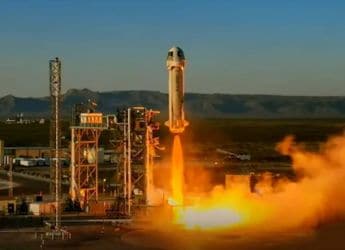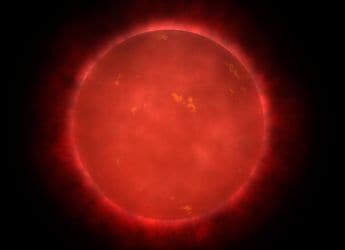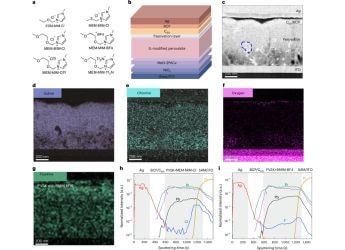- Home
- Mobiles
- Mobiles News
- Apple Said to Mull China Supplier for Next Gen iPhone Screen
Apple Said to Mull China Supplier for Next-Gen iPhone Screen

Apple is in discussions with China's BOE Technology Group Co. to supply next-generation displays for future iPhones, a key component that's being provided by a Samsung Electronics Co. unit, people familiar with the matter said.
Apple's been testing BOE's active-matrix organic light-emitting diode screens for months but hasn't decided if it'll add the Chinese company to its roster of suppliers, one of the people said, asking not to be named talking about private negotiations. BOE, one of the country's largest screen makers, is spending close to CNY 100 billion ($14.5 billion or roughly Rs. 97,066 crores) building two AMOLED plants in the southwestern province of Sichuan in anticipation of future business. Talks are at an early stage and it's unlikely to supply the next iPhone, but BOE is banking on outfitting the one in 2018 or later, the person said.
Apple iPhone 8 Specifications, Release Date, and More - Leaks and Rumours So Far
If BOE is selected for OLED, it will become the first known future supplier of the next-generation screens to Apple outside of South Korea and Japan - a triumph for a Beijing-based company best known for computer and TV displays. The US company is exploring alternatives to address a global shortage of OLED displays as it prepares to adopt the sharper, more power-efficient technology for its next iPhones, catching up with rivals such as Samsung and Huawei Technologies Co.
Apple declined to comment, and BOE declined to comment on talks with customers.
The display is one of the most expensive components of a smartphone. OLED screens are more difficult to produce, making Apple beholden to suppliers still working to manufacture the displays in mass quantities. The world's four biggest suppliers of smartphone displays - Samsung Display Co., Sharp Corp., LG Display Co. and Japan Display Inc. - are said to have insufficient capacity to equip all new iPhones this year, a constraint that may persist into 2018. That means Apple may be forced to adopt OLED in just a single version of its device this year, the 10th anniversary of the smartphone's debut.
iPhone 8's $1,000 Price Tag, and Other Rumours About Apple's Next Smartphone
"It's an opportunity for BOE as Apple is known to seek multiple suppliers for one component," said James Yan, research director for Counterpoint Research in Beijing. "But it's unlikely to challenge Samsung because it is able to roll out high-quality screens at a steady capacity."
BOE's shares had climbed 1.3 percent in Shenzhen by midday, outperforming a mostly unchanged benchmark A-share index. Universal Display Corp., which licenses and sells technology to makers of OLED screens, rose as much as 9.7 percent, the most since November.
Samsung Signs $4.3 Billion-Deal With Apple to Make OLED Displays for iPhone: Report
Founded in 1993 after employees took over an ailing producer of electron tubes, Beijing-based BOE is the world's largest manufacturer of LCD panels by market value, according to data compiled by Bloomberg. BOE, which started out as Beijing Orient and enjoyed the support of a government keen to champion local technology players, is now building a 46.5 billion-yuan flexible AMOLED plant in Chengdu.
While it's ramping up capacity, it's likely to miss the next iPhone. That sixth-generation factory won't crank out a single screen till the summer, while new iPhones typically go on sale in the fall. When that plant is up to full capacity, it'll be able to put out 48,000 glass substrates a month, BOE said in an e-mailed statement, referring to the thin surfaces from which screens are carved out.
Another plant in Mianyang with the same capacity and investment is expected to start production only about two years later. The company currently operates only a small OLED factory in remote Inner Mongolia. Eventually, when its two plants are up and running, it expects to be able to manufacture 1.6 million square-meters of flexible AMOLED glass substrates a year, slightly more than researcher IHS' estimate for total global production in 2016.
Apple typically introduces new technologies for its iPhones across all models when they're unveiled, usually in September, as it did with 3D Touch and Apple Pay. Using different core, user-facing technology in the same iPhone generation would be an unusual step. All iPhone 7 models have liquid-crystal display screens.
The US company and Samsung have an exclusive OLED supply deal covering 2017, people with knowledge of the agreement have said. Yet that doesn't guarantee the South Korean technology giant can make enough displays to sate iPhone demand, particularly given Samsung needs to outfit its own slate of upcoming gadgets. Some analysts estimate that Apple could sell as many as 90 million iPhones in the last three months of 2017 alone.
© 2017 Bloomberg L.P.
Get your daily dose of tech news, reviews, and insights, in under 80 characters on Gadgets 360 Turbo. Connect with fellow tech lovers on our Forum. Follow us on X, Facebook, WhatsApp, Threads and Google News for instant updates. Catch all the action on our YouTube channel.
Related Stories
- Samsung Galaxy Unpacked 2025
- ChatGPT
- Redmi Note 14 Pro+
- iPhone 16
- Apple Vision Pro
- Oneplus 12
- OnePlus Nord CE 3 Lite 5G
- iPhone 13
- Xiaomi 14 Pro
- Oppo Find N3
- Tecno Spark Go (2023)
- Realme V30
- Best Phones Under 25000
- Samsung Galaxy S24 Series
- Cryptocurrency
- iQoo 12
- Samsung Galaxy S24 Ultra
- Giottus
- Samsung Galaxy Z Flip 5
- Apple 'Scary Fast'
- Housefull 5
- GoPro Hero 12 Black Review
- Invincible Season 2
- JioGlass
- HD Ready TV
- Laptop Under 50000
- Smartwatch Under 10000
- Latest Mobile Phones
- Compare Phones
- Huawei Nova 15
- Huawei Nova 15 Pro
- Huawei Nova 15 Ultra
- OnePlus 15R
- Realme Narzo 90x 5G
- Realme Narzo 90 5G
- Vivo S50 Pro Mini
- Vivo S50
- Asus ProArt P16
- MacBook Pro 14-inch (M5, 2025)
- OnePlus Pad Go 2 (5G)
- Infinix Xpad Edge
- OnePlus Watch Lite
- Just Corseca Skywatch Pro
- Acerpure Nitro Z Series 100-inch QLED TV
- Samsung 43 Inch LED Ultra HD (4K) Smart TV (UA43UE81AFULXL)
- Asus ROG Ally
- Nintendo Switch Lite
- Haier 1.6 Ton 5 Star Inverter Split AC (HSU19G-MZAID5BN-INV)
- Haier 1.6 Ton 5 Star Inverter Split AC (HSU19G-MZAIM5BN-INV)







![[Partner Content] OPPO Find X9 Two Week Experience: Here's Why It Stands Out](https://www.gadgets360.com/static/mobile/images/spacer.png)









